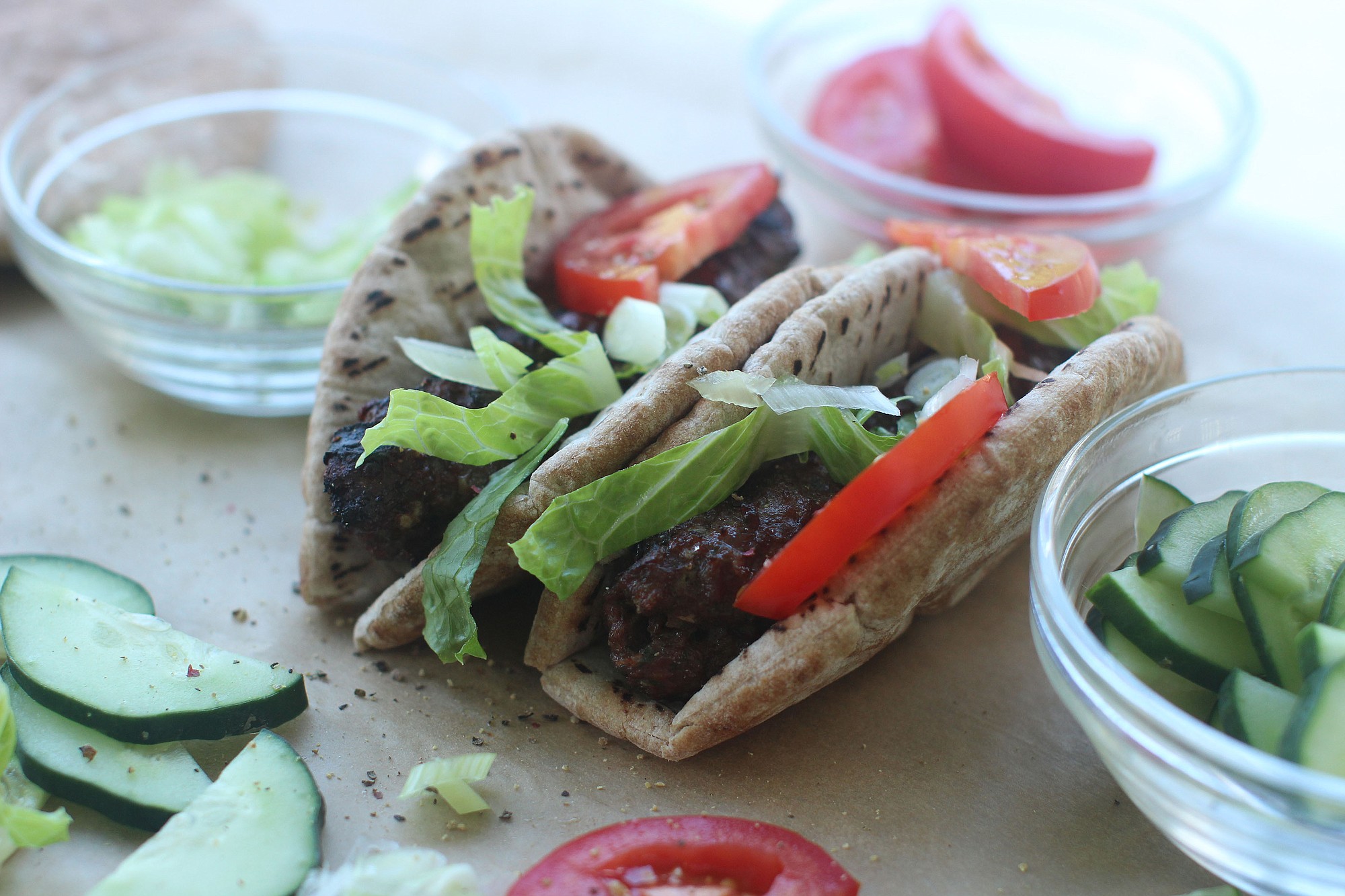With autumn winking at me from the horizon, Labor Day grilling takes on a whole new significance. I’ve either worked my rusty old charcoal grill to the bone over the summer and I’m looking for something a little different to wrap up the season, or I’m swimming in regret over not grilling enough and I’m looking for a quick, satisfying recipe that will make me feel like I’ve accomplished something this summer.
Enter the Middle East’s answer to a hamburger: the shish kebab. Ground meat, woven together with onions, parsley and a native spice mix, molded onto a metal skewer like a delicate sausage, then cooked over smoldering coals. The charred yet perfectly tender kebab is pulled off the skewer using a piece of qubbus, a soft pita bread, then smothered in fresh vegetables and sometimes a little tahini, and eaten right there and then.
It’s Arabic street food at its most practical (who needs plates?) and most delicious.
One of the keys to a great shish kebab is that spice mix, baharat, which in Arabic means nothing more than spices. Typical components include allspice, cumin, black pepper, cardamom, cinnamon and cloves, though it varies by region (for example, a Moroccan version includes dried mint and rose petals).



